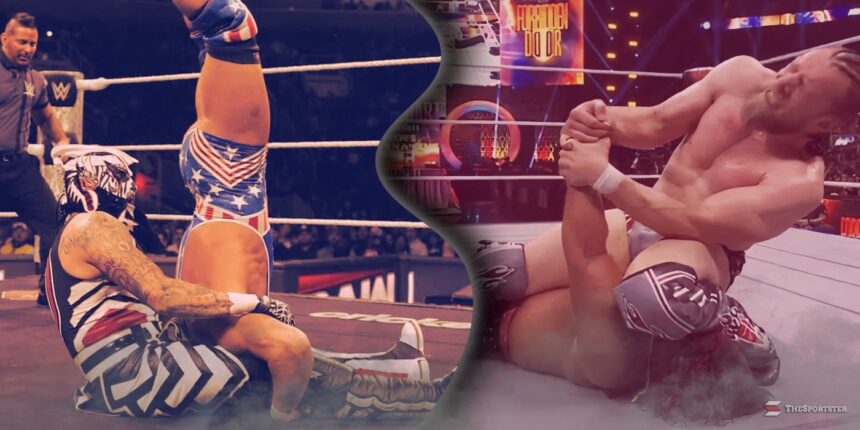Modern wrestling flourishes through innovation, yet many of its most potent techniques were crafted decades ago. These timeless moves, known for their straightforwardness, skill, and drama, continue to feature prominently in contemporary matches, often reinvented in fresh ways.
Whether used as finishing maneuvers, transitions, or as homages to wrestling history, these enduring moves hold a vital place in the sport’s dynamic evolution.
Sleeper Hold: Introduced in 1957 and popularized by Verne Wins, the Sleeper Hold was designed to systematically weaken opponents while creating suspense among the audience as they watched to see if the bout would end. Nowadays, this hold has evolved into a more forceful style, exemplified by Samoa Joe’s Coquina Clutch, which incorporates powerful takedowns and strategic body control, maintaining its role as a tension-building finisher.
Lariat: First seen in 1972 and made famous by Stan Hansen, the true lariat is more than a mere clothesline—it’s a powerful strike driven by momentum and full commitment. Modern adaptations add flair and setup, but the lariat remains a sudden and violent move that often concludes matches, favored by many larger wrestlers.
Figure Four Leglock: Debuting in 1974 through Buddy Rogers, this submission is famed for its dramatic build-up. Fans watch eagerly to see if the opponent will escape or succumb, and icons like Ric Flair have made it a signature move, using accompanying theatrics. Despite today’s fast action, it still plays a critical role in storytelling and fan engagement, with variants like Charlotte Flair’s bridging Figure 8 or MJF’s sudden taps.
German Suplex: Introduced in 1964 by Carl Gotch, the German Suplex combines precision and strength. It requires exact timing and form to execute properly and has become a staple for showcasing athleticism, often performed repeatedly to highlight a wrestler’s skill, either at a fast or controlled pace.
Sharpshooter: Since its introduction in 1987 by Riki Choshu, the Sharpshooter has carried immense legacy and emotional weight, often associated with legends like Bret and Owen Hart. Its application creates strong crowd reactions due to its historical significance and the intense physical and emotional pressure it symbolizes.
DDT: Popularized by Jake Roberts in 1984, the DDT is a simple yet highly effective move that changes match momentum without needing to leave one’s feet. Although it has evolved to serve as a setup or transition, its core remains a surprising and impactful finisher.
Superkick: Introduced in 1985 by Chris Adams, the Superkick is one of wrestling’s most versatile and dramatic moves, easily executed and capable of striking from any position. While no longer always a finisher, it remains a significant and crowd-pleasing strike when timed well.
Piledriver: Dating back to 1942 with Wild Bill Longson, the Piledriver walks a fine line between spectacle and danger. Its rarity enhances its impact, usually reserved to convey high drama, intense storylines, or fierce character shifts.
Atomic Drop: Introduced in 1953 by Lou Thesz, this old-school move is rarely a headline today but still offers rhythm and character to matches. It reminds fans that even simple moves can be crowd favorites if used effectively.
Armbar: Emerging in 1951 thanks to Antonio Inoki, the Armbar draws authenticity from real grappling sports, instantly communicating threat when applied correctly. Influenced by MMA, it has gained renewed prominence due to its balance of realism and entertainment.
Fan Take: These classic wrestling moves are more than just choreography; they are the foundation upon which modern wrestling is built, blending tradition with new energy. For WWE fans, understanding and appreciating these techniques enriches the viewing experience and preserves the sport’s storied history while paving the way for future innovation.












